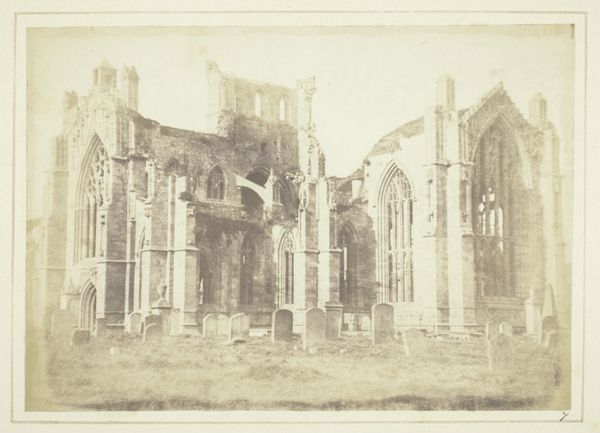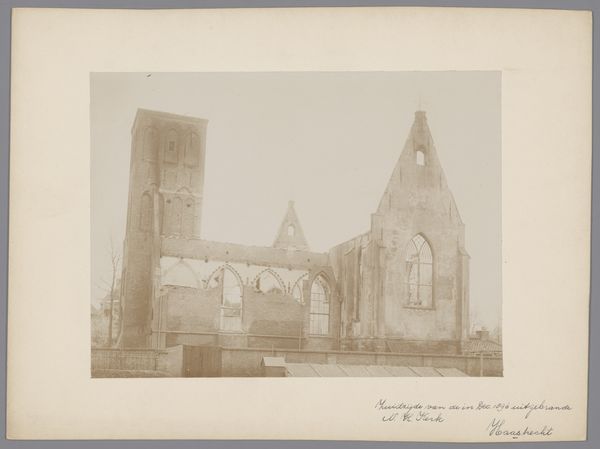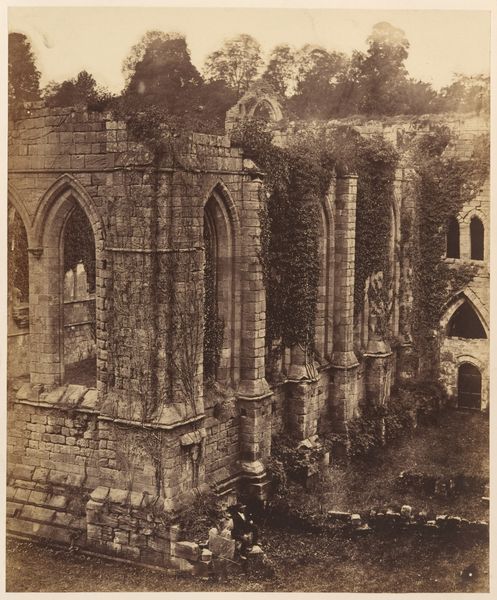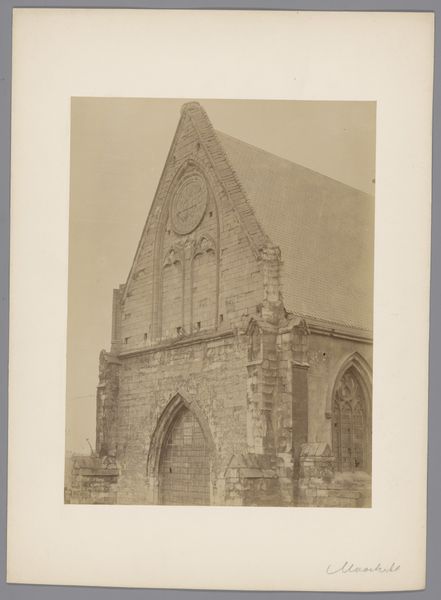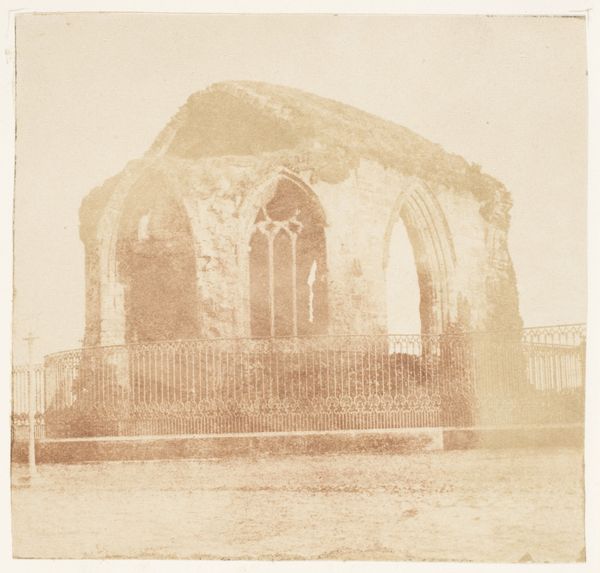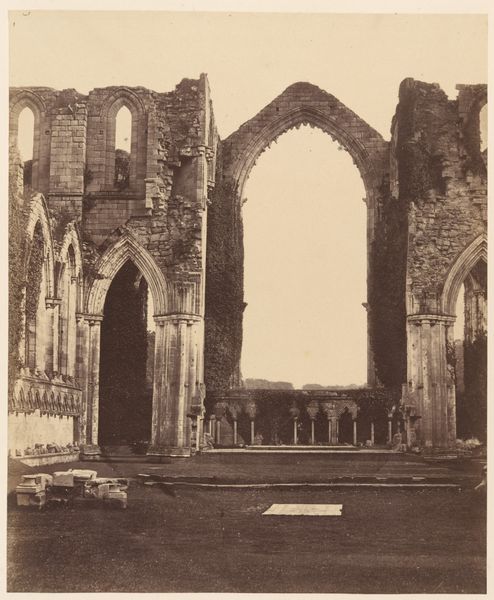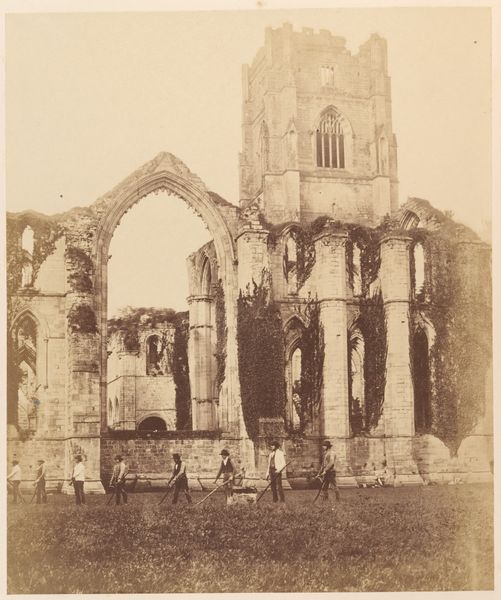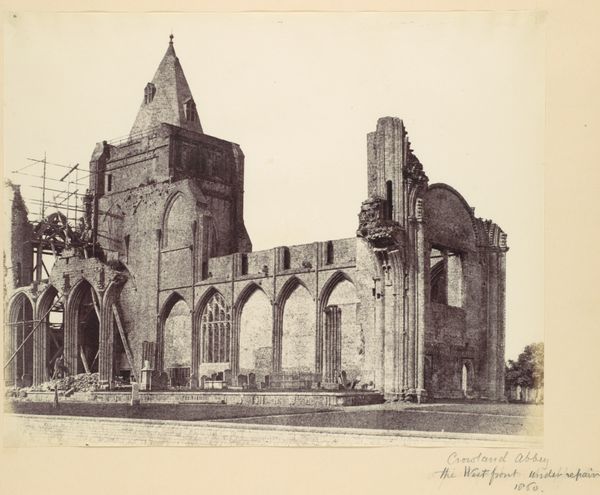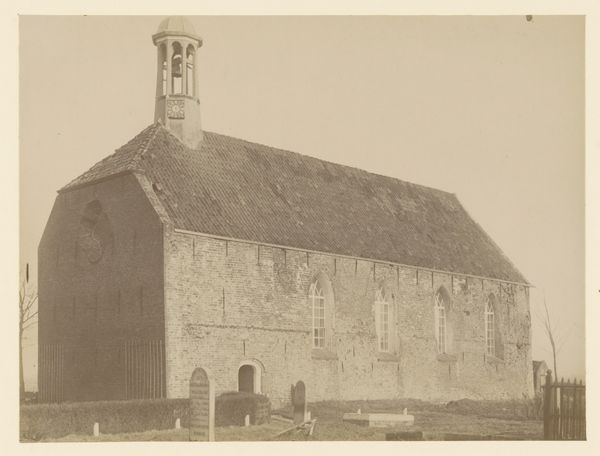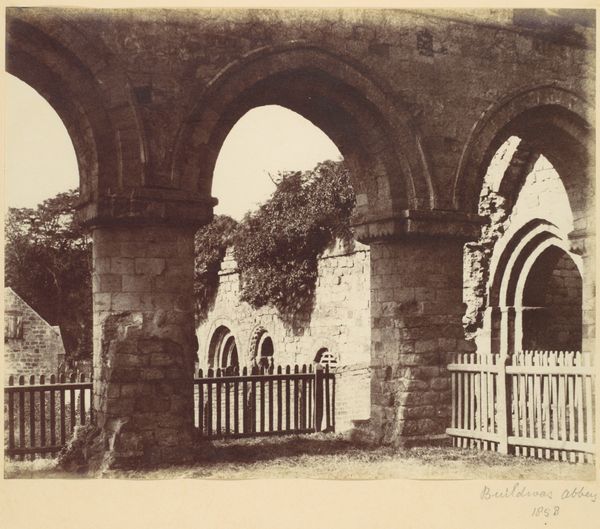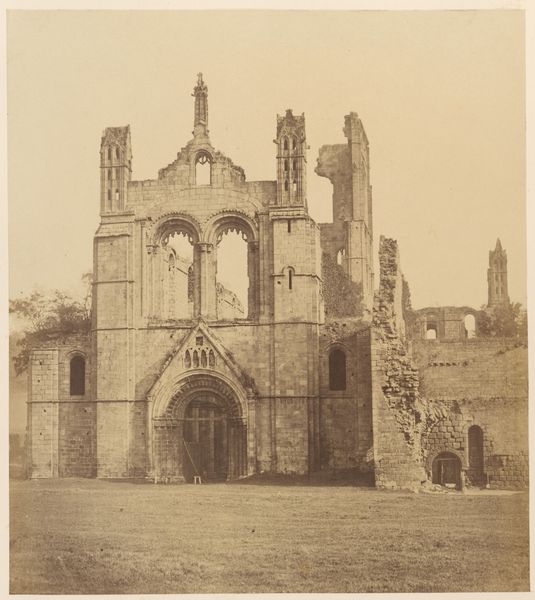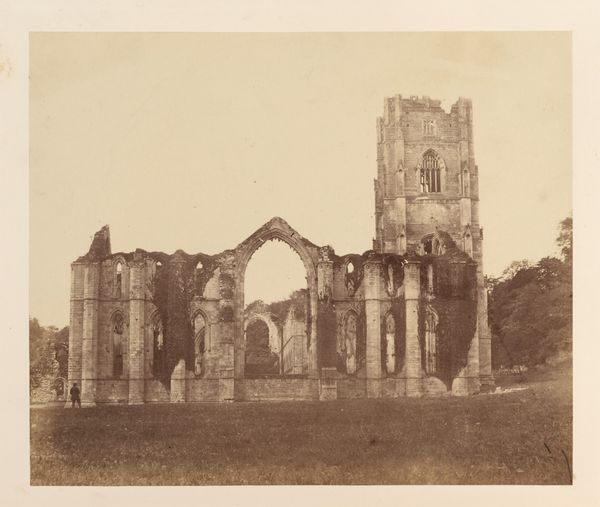
print, photography, site-specific, gelatin-silver-print
# print
#
landscape
#
photography
#
romanticism
#
site-specific
#
gelatin-silver-print
Copyright: Public Domain
This photograph of Edinburgh’s Greyfriars Churchyard was made by Hill and Adamson sometime between 1843 and 1848 using the calotype process. The calotype, an early photographic technique, used paper coated with silver iodide. Unlike the sharper daguerreotype, it produced softer, grainier images due to the paper's texture. This particular print showcases the atmospheric quality inherent in the process. Hill and Adamson were pioneers of photography in Scotland. Their choice of the calotype, with its handmade character, aligns with their artistic vision. The print evokes the social context of 19th-century Scotland, a rapidly changing society grappling with industrialization while holding onto its cultural heritage. The choice of a churchyard as subject matter also highlights the themes of history and memory that were so pertinent at the time. The beauty of this image resides not only in its subject, but also in the hand-crafted process that made it possible. It blurs the boundaries between art, craft, and social documentation.
Comments
No comments
Be the first to comment and join the conversation on the ultimate creative platform.
